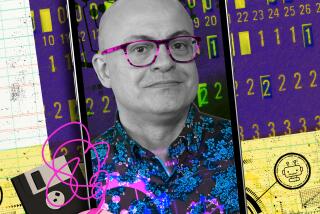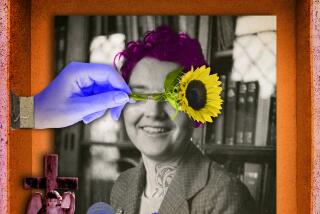The real man behind Roberto Bolano’s post-mortem boom
Roberto Bolaño has made quite a name for himself in the United States over the past decade. Two New York houses have published 18 of his books in English—and a 19th is due out later this year. He has become, arguably, the contemporary Latin American writer most revered by the literati of North America. And all this fame has come to him as a dead man — he succumbed to congenital liver disease in 2003.
This week, the departed Chilean-born novelist and poet was celebrated in an event at the Los Angeles Public Library’s ALOUD series. His biographer, one of his U.S. publishers, and one of his translators attended. Being dead, Bolaño himself wasn’t able to make it. However, the panelists brought him into the room by reading from a poetic manifesto he wrote in 1976, at the age of 23.
“The galaxies of love are appearing in the palm of our hands./Poets, let your hair down (if you have it)/Burn your crap and begin to love until you arrive at incalculable poems/We don’t want kinetic paintings, but enormous kinetic sunsets/Horses running at 500 kilometers per hour/Squirrels of fire jumping over trees of fire/A bet to see who blinks first, between will and sleeping pill.”
David Shook, the poet who translated that manifesto into English, noted the odd variety of writers to whom the young Bolaño made reference in his work: from the French surrealist poet Andre Breton, to assorted Russian science fiction writers. The young Bolaño, Shook concluded, “read voraciously.”
Bolaño began his literary career as a poet, but became famous in the Spanish-speaking world as a prose writer, and especially with the publication of his 1998 novel “Los Detectives Salvajes,” published in English as “The Savage Detectives” in 2007. Monica Maristain, the author of the biography “El Hijo de Mister Playa” (The Son of Mr. Beach), said that much of the legend that has grown up around Bolaño since his death at age 50 simply isn’t true.
He wasn’t a heroin addict and he didn’t drink himself to death, said Maristain, who also conducted the last interview Bolaño ever gave, in 2003 to the Mexican edition of Playboy magazine. “He had a super boring daily life,” said Maristain, an Argentine-born, Mexico City-based journalist. “It was a life built around his own writing rituals and habits.”
True, Bolaño had many affairs, though he was married at the time of his death, Maristain said. He was survived by a widow, Carolina Lopez, who is also the mother of his two children. But his companion for much of the last seven years of his life was Carmen Perez de Vega, a Spanish special-education teacher he met on a train — Bolaño wooed her with a copy of his novel “Distant Star.” The couple later lived together in the seaside town of Blanes, north of Barcelona, though Bolaño remained close to his wife. When he was asked, in his final interview, “Whose opinion of your work to you value most?” Bolaño answered: “Carolina reads my books first, and then [Jorge] Herralde, [his editor], and then I try to forget them forever.”
Such complicated relationships are better described in novels than in newspapers or magazines, and yet it’s in the mass media that Bolaño has become famous. Barbara Epler, the president of New Directions, said she bought Bolaño’s novel “By Night in Chile” on the recommendation of the writer Francisco Goldman and others just a few months before the author’s death. Her small house released the book to little fanfare. A few years later Epler watched, in awe, as the much larger house Farrar, Straus and Giroux launched “The Savage Detectives” with a publicity campaign that included aggressive, early use of Twitter, a New York event with free tote bags and glasses of whiskey, and an author photograph of a very young and very long-haired Bolaño looking like some Latin American rock star. The American legend of Bolaño had been set in motion, Epler said, and in the years since it’s taken on a life of its own.
New Directions will add another chapter to the legend next month, when it publishes “The Unknown University,” a bilingual “deluxe edition” of his complete poetry.
[For the record, 12:41 p.m. May 17: An earlier version of this post incorrectly spelled biographer Monica Maristain’s name as Maristan.]
ALSO:
A Carlos Fuentes boom on the anniversary of his death
LeaLA aims high and wide in Spanish-language book fair
Revisiting Federico Garcia Lorca in a new novel, and in the writer’s own voice
More to Read
Sign up for our Book Club newsletter
Get the latest news, events and more from the Los Angeles Times Book Club, and help us get L.A. reading and talking.
You may occasionally receive promotional content from the Los Angeles Times.








